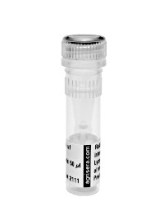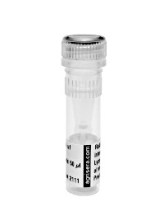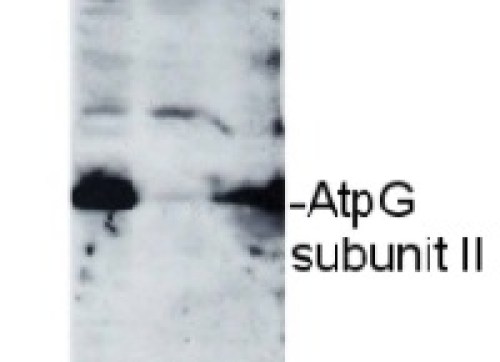
Anti-AtpG | ATPsynthase subunit II b' (chloroplastic)
(Cat#: AS09 457)
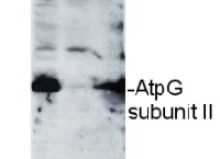
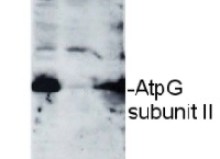
Description
- Immunogen: KLH-conjugated mix of synthetic peptide derived from Arabidopsis thaliana AtpG Q0WMW8, At4g32260 and Chlamydomonas reinhardtii ATP synthase subunit b' A8J785
- Host: Rabbit
- Clonality: Polyclonal
- Purity: Serum
- Format: Lyophilized
- Quantity: 100 µl
- Reconstitution: For reconstitution add 100 µl of sterile water
- Storage: Store lyophilized/reconstituted at -20°C; once reconstituted make aliquots to avoid repeated freeze-thaw cycles. Please remember to spin the tubes briefly prior to opening them to avoid any losses that might occur from material adhering to the cap or sides of the tube.
- Tested applications: Western blot (WB)
- Recommended dilutions: 1 : 10 000 (WB)
- Expected | apparent MW: 22.4 kDa (Chlamydomonas reinhardtii) 15.9 kDa (Arabidopsis thaliana)
- Confirmed reactivity: Arabidopsis thaliana, Chlamydomonas reinhardtii
- Not reactive in: No confirmed exceptions from predicted reactivity are currently known
- ATP synthase produces ATP from ADP in the presence of a proton gradient across the membrane. F-type ATPases have two components, CF(1) - the catalytic core - and CF(0) - the membrane proton channel. CF(1) has five subunits: alpha(3), beta(3), gamma(1), delta(1), epsilon(1). CF(0) has three main subunits: a, b and c.Alternative names: ATPase subunit II, ATP synthase F(0) sector subunit b'
- Antibody reactivity for Arabidopsis thaliana has been confirmed on membrane fraction.
Boca Scientific is your premiere source for high-quality, innovative solutions for Cell Biology, Molecular Biology, Immunology, genetics and other lab products and reagents. We bring leading-edge products from our own-line and around the world to laboratories in the US and Canada. Our goal is to offer excellent solutions to drive research and discoveries backed by superior customer support.


